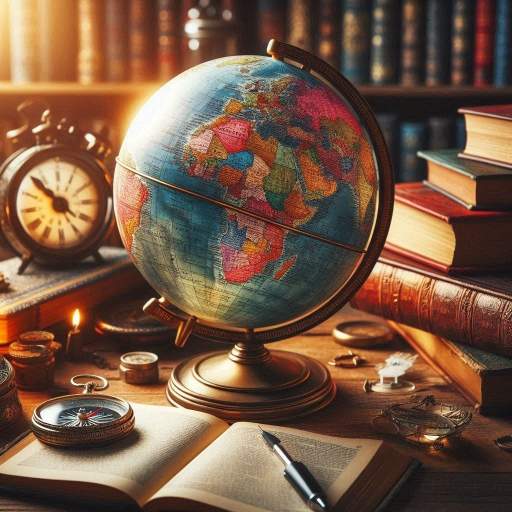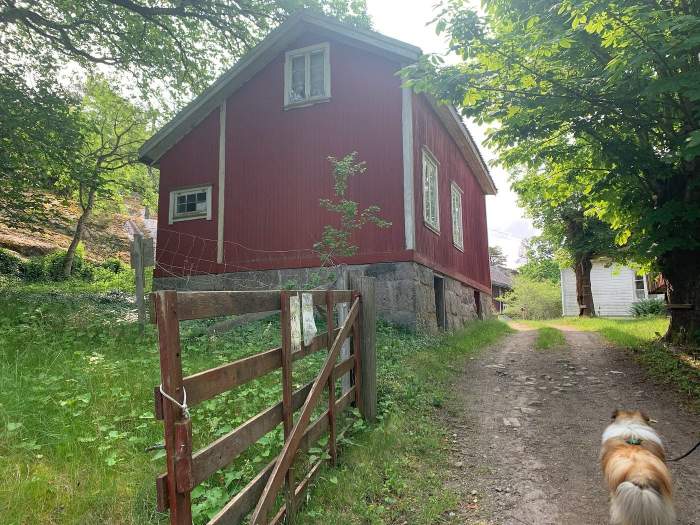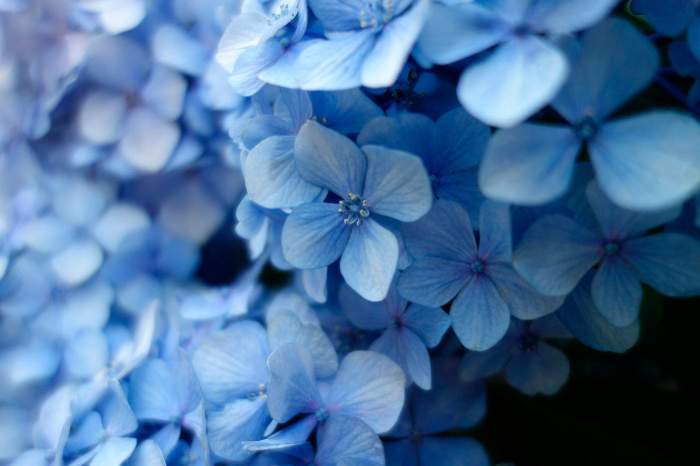Happy To Be a Norwegian — A What?
Saturday, May 24, 2025
The way to happiness that is ageless, universal, true, and tried

The image is AI created by Annelie, using Microsoft Word co-pilot.
Not long ago I was in a beauty parlor, getting my nails done. A soft buzz of chatter filled the room. A woman next to me suddenly asked a question — one I have been asked many times before.
“Where are you from, I detect an accent?” She looked at me with an intriguing smile. “I am from Norway,” I said. I was born and grew up there. As always, I anticipated her reaction because the responses I often get can be quite amusing.
This one was no different.
“Norway, I have been to Norway”, she said. With excitement, she looked at me like she had won the lottery.
“Wonderful”, I answered, eager to learn where she had been. “Where in Norway did you go”?
“I went to Paris,” she declared.
That answer was the first of its kind, but there have been others. Here are some other questions I have been asked about this long, skinny, and blessed land way up north.
- So, you Norwegians have the midnight sun, but do you also have the regular one?
- Do you have winter all year in Norway?
- Is Sweden the capital of Norway?
My dear fellow humans, for clarification, know this to be more accurate:
- Paris is the capital of France, located about 1350 kilometers from Oslo, the capital of Norway. Both are European countries.
- Yes, Norwegians are blessed to have regular sun rises and sunsets, from the same sun we share with everyone else on the planet. But during the summer months, when the sun is above the horizon, it shines day and night. No wonder we had dark navy blue window shades in my childhood bedroom.
- Norway has four seasons, much like the New York climate where I lived for most of my adult life. But the winters are longer, and the summers are shorter in Larvik. Larvik was my hometown, located along the southeastern coastline, not far from Oslo. Season lengths and weather conditions vary a lot across Norway because the length from north to south measures 1,750 kilometers.
- Sweden is not part of Norway. Sweden, Norway, and Denmark are separate kingdoms that share borders, by land or by sea. Collectively, this region is called Scandinavia. Once, way back in 1397, all three countries were united as one kingdom for a short while. It was called the Kalmar Union, a true Nordic empire.
During my years of living in the United States, I have met numerous tourists who have enjoyed traveling through Scandinavia. They have experienced the beautiful mountains, the fjords, the foods, and the culture from this northern region of the world.
Only Norway 🇳🇴, Sweden 🇸🇪, and Denmark 🇩🇰 form the region called Scandinavia. But when we talk about the Northern countries, Finland 🇫🇮 and Iceland 🇮🇸 are added to the trio.
These countries share more than the common cross in their flag design, symbolizing Christianity. They also share their Nordic heritage and Viking history. These countries provide their citizens with a strong sense of trust, social support, and lack of corruption.
Best of all, these northerners have the freedom to make their own choices and freedom of speech. Norway also offers universal health care and free access to higher education for all students, regardless of their nationality.
For these reasons, and many more, according to a certain happiness report, some of the happiest people in the world live there.

Photo taken by Annelie on a hike in Norway
How these five countries in northern Europe share happiness
The annual World Happiness Report (WHR) is out for 2025. The yearly report is a partnership between Gallup, the Oxford Wellbeing Research Centre, the UN Sustainable Development Solutions Network, and the World Happiness Report’s Editorial Board.
They measure factors that contribute to subjective life satisfaction and happiness. The WHR is a resource for information about the global interest in well-being and happiness.
Every year, since 2012, while focusing on global happiness, the questions of interest are different. From being the best country to raise happy kids, to safety, health, life expectancy, trust, migration, sustainable development, and income, data is gathered and shared.
Because the WHR assesses the current state of satisfaction and well-being among our global citizens, it explores the science of what makes people happy. This is based on their own opinion.
According to the individual’s response to questions regarding their current life, happiness, and well-being, the Gallup World Poll asks the respondents to evaluate and rate their current quality of life. The best possible answer is a 10 and the worst possible response is a 0. This numerical scale is referred to as the Cantril Ladder. About 1000 responses are typically gathered from each country.
This year, the focus of the survey was placed on the subject of caring and sharing; a global analysis of happiness and kindness. Countries are ranked according to subjective self-assessment averaged over the years 2022–2024.
How do the factors of caring for others and being generous contribute to happiness? Sharing meals with others, trusting others, giving to others, living with others, and connecting with others? It all matters in how we perceive happiness.
Generous behaviors are associated with, and often a direct cause, of increased well-being among givers across the world.
Year after year, the five northern countries of Norway, Sweden, Denmark, Finland, and Iceland continue to rank among the top 10 happiest countries in the world. Finland has kept a steady lead over the last few years.
These national characteristics make me proud and happy to be Norwegian. Norway, with less than six million inhabitants, is also among one of the most generous countries in the world. According to the Our World in Data report, Norway gives most money to foreign aid per capita. Of course, Norway is also a wealthy country with a high per capita income.
We do not have to be Norwegians, and we do not have to be wealthy to experience happiness
“Like ‘mercy’ in Shakespeare’s Merchant of Venice, caring is “twice-blessed” — it blesses those who give and those who receive.”
From the 2025 World Happiness Report.
Satisfaction and happiness are what most of us aim for. Finding a way, through activities of daily living, we seek to develop a state of mind that provides contentment and a feeling of joy. We want to know that our life is meaningful and valued. In one way or another, the purpose of life is to find personal happiness. We deserve that before we take our last breath; all eight billion of us.
As we grow older, the hills ahead become steeper
A day when nothing hurts, and everything works is not to be taken for granted anymore. Things change. Life does not offer the same menu of choices, as it did in our youth. Aging has a way of deciding that. Most of us, from the Boomer and the Silent Generation will stay put where we are.
When I first came to the US to work as an au pair in Brooklyn, I was 17 years old. Never did I think I was going to grow old here. But here I am still, at age 74.
Despite knowing that I am going to die in the US, I have maintained my Norwegian citizenship. Happy to be Norwegian, yes, but my life is here in the United States of America.
As a permanent resident, I got married, raised a family, and worked as a critical care nurse for 30 years. I have now retired to Florida. Here I found a way to “give back” by teaching and writing about health for adults over 65. I am fortunate to have family and friends. I am happy.
But not everyone is.
In the World Happiness Report, the United States ranked number 24. It is the lowest since 2012 when the first report came out. We are living in global turmoil with war and woes. Most of our external environment is not under our control. Yet, with some intentional effort, the happiness thermostat can be self-regulating.

Image is AI generated by annelie with Word co-pilot.
Happiness can also be a stupid word that blows in the wind
When a country experiences social unrest, most people are not happy. They are angry. They are angry because trust and stability are replaced with dissatisfaction and political instability. In times like this, happiness becomes like an estranged friend that flies away with the wind. It is hard to catch. No, it is harder to catch, but it can be done.
An instant solution to experience happiness is available, but first, we need a hammer to crack our mindset wide open. If your mind is closed, you may find this happiness hack to be too easy to attain; no struggle is required. You may think it is banal, boring, and plain dumb. But it is not. It is essential to the survival of human character, decency, empathy, love, and happiness.
We can give, we can donate, and we can share what we have. Regardless of whether our offer is tangible or non-tangible, we can connect, volunteer, show kindness, return a lost wallet, and forgive our fellow human beings for their mistakes. Benevolent acts and helping friends and strangers make us feel good. It makes us happy. And we neither have to be Norwegian nor wealthy.
Norwegian or not, wealthy or not, sharing will not always be blissful
Of course, there is no guarantee that the act of giving results in happiness. At times, seeds and good deeds do not land in fertile soil. We may be generous with our time, money, energy, and favors to a family member or friend, and yet, instead of feeling happy, we feel unappreciated, used, and resentful.
Once I read a book by my late teacher, Dr Wayne Dyer. He wrote something that I found to be true. He wrote that when we feel resentful towards another person, it is often a sign that we have been giving too much in one direction. Life later taught me that giving is under our control, but the response from the receiver is not. Our intention is the happiness ingredient.
Variable acts of deeds and favors rise from the giver’s good intention

Photo by TOMOKO UJI on Unsplash
Yesterday I did something that I have never done before, and I will never do again. I ordered, signed, and paid for my cremation services. For my ashes, I chose a container designed with Forget- Me- Nots flowers. The container has different hues of blue, which is my favorite color.
Did that make me happy? No, it made me sad. Bringing awareness to exiting this life with the people and the places that I love so much was painful. But soon, the feeling of sadness was replaced with peace of mind and satisfaction. Thinking about it, I now enjoy a quiet form of happiness, an intention from my heart, ” It is a gift to my children”.
Spending time in nature has a strong connection to happiness; physical and mental well-being. This way to happiness is not only shared by the northern countries, but by anyone who embraces the joy of the great outdoors. As far back as I can remember I loved roaming between the mountains and the fjords. Norwegians call this friluftsliv, and it translates into open-air-living. The older I get, the more I long for nature and the more time I want to spend outdoors.
Spending time in the great outdoors will become unlimited, one day. The future ashes that will find its way into the beautiful blue, forget-me-nots-container shall become part of nature. Ashes to ashes and dust to dust, somewhere in the great outdoors, the remains of what once was me, shall be put to eternal rest. I am happy to know that I decided to do that; it is a gift to myself.
Thank you.
. . .
🇳🇴Annelie Holmene Pelaez believes that everyone has an attribute to share with others. Promoting cardiovascular health and helping adults over age 65 is her contribution. When we don’t let age define us, but rather empower us to grow, we discover health and happiness are byproducts of who we are.
Annelie is the author of the book, Say Yes to A Better Life, available at Amazon.
Sign up for our newsletter and a free PDF designed specifically for Boomer Girls.
Some of the links on this website are affiliate links, which means I may earn a small commission if you make a purchase through these links, at no extra cost to you. I only recommend products and services that I believe in and think will add value to my readers. Your support by using these links helps to keep the site running and allows me to continue offering helpful content.





